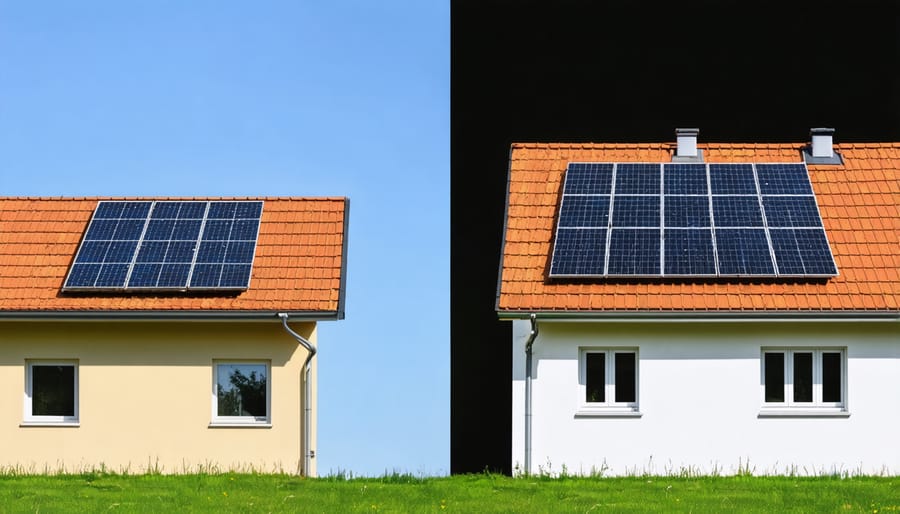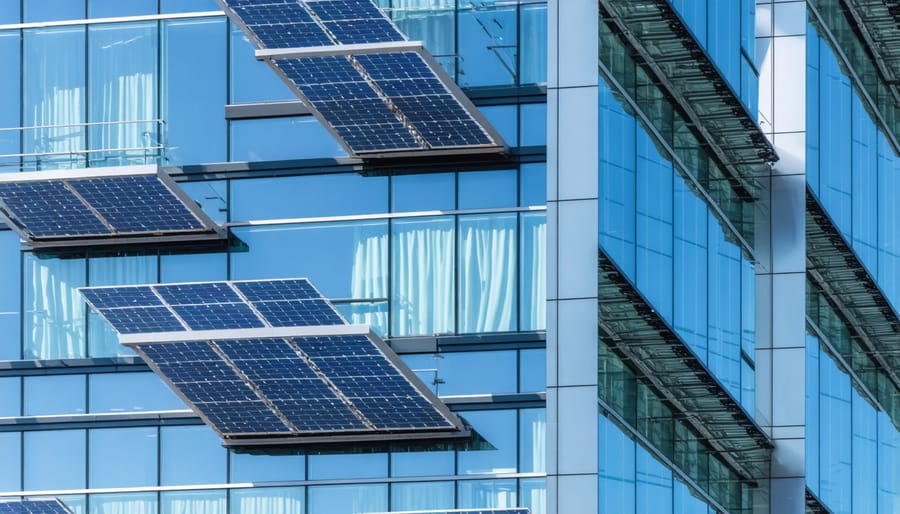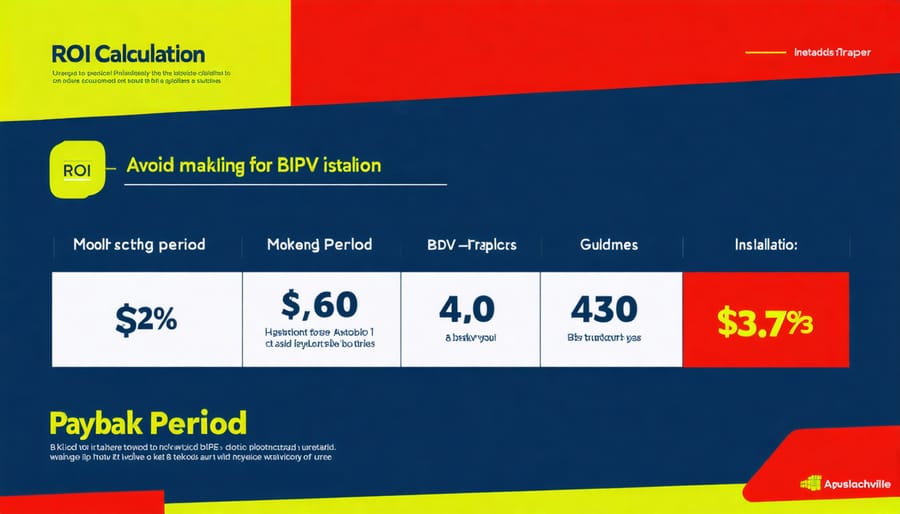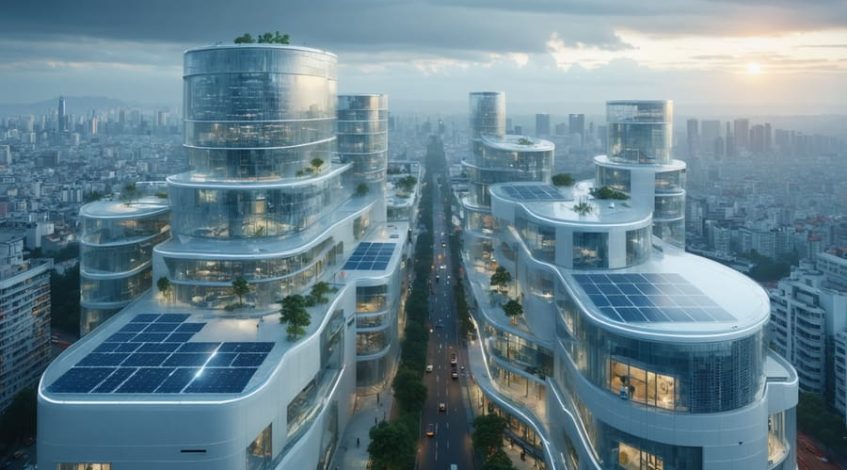Building-integrated photovoltaic (BIPV) systems represent the next evolution in sustainable architecture, seamlessly merging solar power generation with modern building design. By incorporating solar panels directly into building materials like roofing, windows, and facades, BIPV technology transforms ordinary construction elements into active energy producers while maintaining aesthetic appeal through nature-inspired solar architecture. This innovative approach not only reduces construction costs by replacing traditional building materials but also generates clean electricity, offering building owners a dual-purpose investment that pays dividends through reduced energy bills and increased property value.
Unlike conventional rooftop solar installations, BIPV systems integrate seamlessly into the building envelope, eliminating the need for separate mounting systems while preserving architectural integrity. This revolutionary technology enables architects and facility managers to meet sustainability goals without compromising design freedom, making it an increasingly attractive option for new construction projects and major renovations in both commercial and residential sectors.
What Makes Building-Integrated Solar Different?
Seamless Integration vs. Traditional Mounting
Building-integrated solar panels represent a significant advancement over traditional mounting methods. While conventional systems are retrofitted onto existing structures using mounting hardware and racks, BIPV seamlessly incorporates solar technology into building materials themselves. This integration eliminates the need for separate mounting systems, reducing both material costs and installation complexity.
Traditional mounting requires additional structural considerations to support the weight of panels and racking systems, often leading to increased engineering costs. In contrast, BIPV components serve dual purposes – as both building materials and power generators – optimizing space utilization and architectural aesthetics.
The visual impact also differs significantly. Conventional solar installations typically appear as visible additions to a building’s exterior, while BIPV systems blend naturally with the building’s design elements. This architectural integration is particularly valuable for projects where aesthetic considerations are paramount, such as in urban developments or historic districts.
From a maintenance perspective, BIPV systems generally offer better protection against weather elements and require less frequent cleaning, as they lack the gaps and spaces common in traditional mounting systems where debris can accumulate.

Dual-Purpose Design Benefits
Building-integrated photovoltaic (BIPV) systems represent a significant advancement in sustainable construction by serving dual functions that maximize both space and resources. These systems replace traditional building materials while simultaneously generating clean energy, effectively turning building surfaces into power plants. Instead of requiring additional space for solar installation, BIPV components seamlessly integrate into roofs, facades, windows, and other architectural elements.
This dual-purpose approach delivers substantial cost savings by eliminating the need for separate building materials and mounting systems. For example, BIPV roof tiles replace conventional roofing materials while providing weather protection and power generation. Similarly, solar glass installations serve as both windows and energy producers, maintaining natural lighting while reducing energy consumption.
The integration of solar technology into building materials also enhances aesthetic value, as modern BIPV solutions are designed to complement architectural styles rather than appear as add-on installations. This architectural integration often leads to increased property values and improved energy performance ratings, making buildings more attractive to potential tenants or buyers. The result is a sophisticated solution that combines functionality with sustainability, delivering both immediate and long-term returns on investment.
Popular BIPV Applications
Solar Roofing Solutions
Solar roofing solutions represent a significant advancement in building-integrated photovoltaic (BIPV) technology, offering seamless integration of solar power generation with traditional roofing materials. Solar tiles and shingles are designed to mirror the appearance of conventional roofing products while incorporating photovoltaic cells that generate electricity.
These innovative solutions come in various forms, including solar tiles that replicate the aesthetic of slate or terra cotta, and solar shingles that blend perfectly with asphalt roofing. Premium manufacturers now offer products that are virtually indistinguishable from traditional roofing materials, making them particularly attractive for properties where architectural preservation is crucial.
Modern solar roofing systems typically achieve efficiency ratings between 14% and 18%, while high-end products can reach up to 20%. These systems are engineered to withstand severe weather conditions and typically come with warranties ranging from 20 to 30 years, matching or exceeding traditional roofing materials.
Installation costs for solar roofing solutions are generally higher than conventional solar panels, but they offer significant advantages in terms of aesthetics and dual functionality. For new construction projects or complete roof replacements, integrated solutions can be more cost-effective when considering the combined cost of traditional roofing materials and separate solar installations.
The market for solar roofing has expanded significantly, with major manufacturers offering various options to suit different architectural styles and energy requirements. This evolution in solar technology provides property owners with solutions that combine energy efficiency with architectural integrity.
Solar Facades and Windows
Solar facades and windows represent a revolutionary advancement in sustainable building design, offering dual functionality as both construction elements and power generators. Modern solar facades utilize photovoltaic cells integrated directly into vertical building surfaces, while semi-transparent solar glazing transforms traditional windows into energy-producing assets.
These installations can achieve power outputs ranging from 50 to 150 watts per square meter, depending on orientation and transparency levels. Semi-transparent solar windows typically offer 20-40% transparency while maintaining their power-generating capabilities, making them ideal for office buildings and commercial spaces where natural light is essential.
Recent technological advances have introduced color-customizable solar facades and enhanced aesthetic options, allowing architects to maintain design integrity while incorporating renewable energy solutions. Notable implementations include the Copenhagen International School, featuring 12,000 solar panels across its facade, generating 300 MWh annually while serving as an architectural statement.
For maximum efficiency, these systems often incorporate smart monitoring technology and can be seamlessly integrated with building management systems, optimizing energy production and consumption in real-time.

Skylight and Canopy Integration
Skylight and canopy integration represents one of the most innovative applications of building-integrated photovoltaics, combining natural daylighting with renewable energy generation. These overhead BIPV installations utilize semi-transparent solar panels that allow filtered natural light to pass through while capturing solar energy, creating a dual-purpose architectural element.
Modern BIPV skylights achieve transparency levels between 20% and 40%, striking an optimal balance between light transmission and power generation. The technology is particularly effective in commercial atriums, walkways, and parking structures, where large overhead spaces can be transformed into power-generating assets.
For example, the Munich Airport Terminal 2 features a 7,200-square-meter solar canopy that generates over 445,000 kWh annually while providing weather protection for passengers. Similar installations have been successfully implemented in shopping centers and corporate campuses worldwide, demonstrating the versatility of overhead BIPV solutions.
These systems typically integrate seamlessly with building management systems, allowing for automated light and temperature control while contributing to LEED certification requirements and sustainability goals.
Financial Benefits and ROI

Energy Cost Reduction
Building-integrated solar panels offer substantial energy cost reductions through multiple pathways. On average, commercial buildings can reduce their electricity costs by 20-40% after implementing BIPV solutions, with some facilities achieving savings of up to 60% depending on their location and energy consumption patterns.
The cost-saving potential is particularly significant in regions with high electricity rates or favorable solar incentives. For instance, a typical 50,000-square-foot commercial building in California can save approximately $50,000-$75,000 annually on energy costs through BIPV implementation. These savings are realized through reduced grid electricity consumption and potential revenue from excess energy production fed back into the grid.
Additionally, BIPV systems help stabilize long-term energy costs by reducing exposure to utility rate fluctuations. With electricity prices rising at an average rate of 2-3% annually, building-integrated solar panels provide a hedge against future cost increases. The initial investment is typically recovered within 5-8 years, after which the system continues to generate virtually free electricity for 20-25 years.
Many facilities also benefit from demand charge reduction, as BIPV systems often generate maximum power during peak usage hours when electricity rates are highest. This alignment between production and consumption patterns maximizes the financial benefits, particularly for commercial and industrial facilities with high daytime energy demands.
Available Incentives and Rebates
Building-integrated solar panels are supported by numerous financial incentives and rebates across different jurisdictions, making the initial investment more manageable for property owners. The federal Investment Tax Credit (ITC) remains one of the most significant incentives, allowing building owners to deduct up to 30% of their BIPV installation costs from their federal taxes through 2032.
Many states offer additional tax incentives, grants, and performance-based incentives. For example, California’s Self-Generation Incentive Program (SGIP) provides rebates for distributed energy systems, including BIPV installations. New York’s NY-Sun program offers direct incentives based on system size and location.
Commercial property owners can also benefit from accelerated depreciation through the Modified Accelerated Cost Recovery System (MACRS), allowing them to recover their solar investment through depreciation deductions over a five-year period. Local utilities often provide additional rebates and performance-based incentives, which can vary significantly by region.
Some municipalities offer property tax exemptions for BIPV installations, ensuring that the added value to the building doesn’t increase property tax assessments. Organizations can also take advantage of Power Purchase Agreements (PPAs) and solar leasing options, which can eliminate upfront costs while still benefiting from clean energy and reduced utility bills.
It’s essential to consult with solar installation professionals and tax advisors to identify all available incentives, as programs and requirements frequently update to reflect market conditions and policy changes.
Implementation Considerations
Building Design Requirements
Successful integration of building-integrated photovoltaic (BIPV) systems requires careful consideration of several structural and architectural factors. The building must have adequate structural support to bear the additional weight of solar panels and mounting systems, typically ranging from 11-15 kg/m². Roof pitch and orientation play crucial roles, with optimal angles between 30-45 degrees facing south in the Northern Hemisphere (north in the Southern Hemisphere).
Weather resistance and waterproofing specifications must meet local building codes while maintaining the integrity of the solar installation. Modern biophilic solar integration approaches ensure seamless incorporation with existing building elements while maximizing energy production.
Electrical infrastructure requirements include appropriate wiring systems, inverter placement, and integration with existing power systems. The building’s electrical room must accommodate additional equipment while maintaining proper ventilation and temperature control. Safety features such as rapid shutdown systems and proper grounding must be incorporated into the design.
Thermal considerations are equally important, as BIPV systems can affect building temperature. Adequate ventilation behind panels helps maintain optimal operating temperatures and building comfort. Load calculations must account for both dead loads (permanent weight) and live loads (wind, snow, maintenance access), ensuring the structure can support the installation throughout its lifetime.
Professional Installation and Maintenance
Selecting qualified professionals for BIPV installation is crucial for system performance and longevity. Look for installers with specific BIPV certification and extensive experience in both solar technology and building construction. Verify their credentials, insurance coverage, and track record with similar projects. Request detailed proposals that include structural assessments, electrical integration plans, and weatherproofing strategies.
Professional installation typically involves multiple phases: initial site assessment, system design, structural modifications, panel installation, electrical integration, and commissioning. Each phase requires careful coordination between various trades to ensure seamless integration with the building envelope.
Regular maintenance is essential for optimal BIPV performance. Establish a comprehensive maintenance schedule that includes:
– Quarterly visual inspections for physical damage or debris
– Annual electrical system checks
– Regular cleaning of panel surfaces
– Monitoring system performance data
– Weather sealant inspections
– Connection and wiring evaluations
Consider implementing a remote monitoring system to track performance metrics and detect potential issues early. This proactive approach can prevent system failures and maintain optimal energy generation. Many professional installers offer maintenance contracts that include scheduled inspections, cleaning services, and emergency repairs.
Document all maintenance activities and keep detailed records of system performance. This data helps optimize maintenance schedules and provides valuable information for warranty claims or system upgrades. Partner with your installer to develop a customized maintenance protocol that accounts for your specific installation type and local environmental conditions.
Building-integrated photovoltaic technology represents a significant leap forward in sustainable architecture and environmentally conscious design. As we’ve explored throughout this article, BIPV systems offer multiple advantages that extend beyond traditional solar installations, combining energy generation with architectural functionality and aesthetic appeal.
The future of BIPV technology looks increasingly promising, with advancing technologies driving down costs while improving efficiency and design flexibility. Market projections indicate substantial growth in the BIPV sector over the next decade, driven by stricter building energy codes, rising electricity costs, and increasing corporate commitment to sustainability goals.
For business owners and facility managers, BIPV represents a strategic investment that delivers long-term value through reduced energy costs, enhanced building performance, and improved property values. Government incentives and rebates further strengthen the business case for BIPV adoption, making it an increasingly attractive option for new construction and renovation projects.
As technology continues to evolve, we can expect to see more innovative BIPV applications, including transparent solar glass, colored panels, and more efficient energy storage solutions. These advancements, combined with growing environmental awareness and regulatory support, position BIPV as a cornerstone of sustainable building design for the future.

